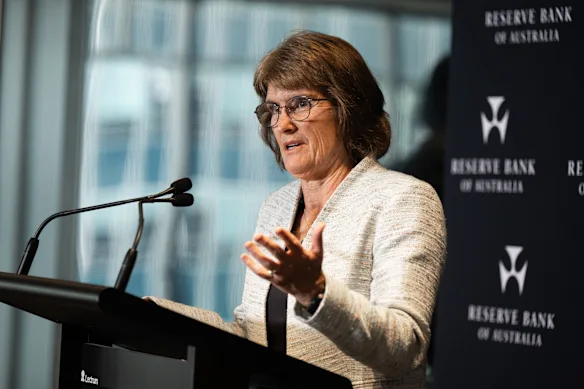TPG Triple Zero death to be investigated; Trump Gaza peace plan approved by UN; Jess Wilson defeats Brad Battin to become next Victorian Liberal Party leader
The Reserve Bank has signaled what it will take for official interest rates to fall further, with the jobs market and consumer spending the key swing factors.
Minutes of the bank’s Melbourne Cup Day meeting, at which it left the cash rate at 3.6 per cent, released today show the discussion among bank board members about how interest rate settings could change.
There’s been a growing consensus the RBA will keep rates steady all through 2026. Commonwealth Bank boss Matt Comyn told a parliamentary hearing this morning he believed a rate cut next year was unlikely.

Reserve Bank governor Michele Bullock speaking after the bank’s Melbourne Cup Day meeting.Credit: AFR
The RBA minutes showed board members argued there were situations where rates may need to be reduced.
A material weakening of the jobs market is seen as one of the biggest risks, particularly if the private sector starts to struggle.
“[Members] noted the risk that employment growth in the market sector remains soft, which could occur if the uncertain economic outlook reduces firms’ willingness to hire or if an emerging focus on cost-cutting results in lay-offs,” the minutes showed.
A drop-off in the general economy, especially if shoppers become more cautious about their spending, would also put a rate cut back on the agenda.
But, the minutes showed, the bank believes rates could hold steady if the “emerging recovery in demand was stronger than expected” which would itself strengthen the jobs market.
Another risk would be if productivity growth proved weaker than expected. The RBA earlier this year reduced its long-term assumption for productivity growth.
The bank’s monetary policy committee meets once more this year, in early December, with financial markets putting the chance of a rate cut at just 7 per cent.





